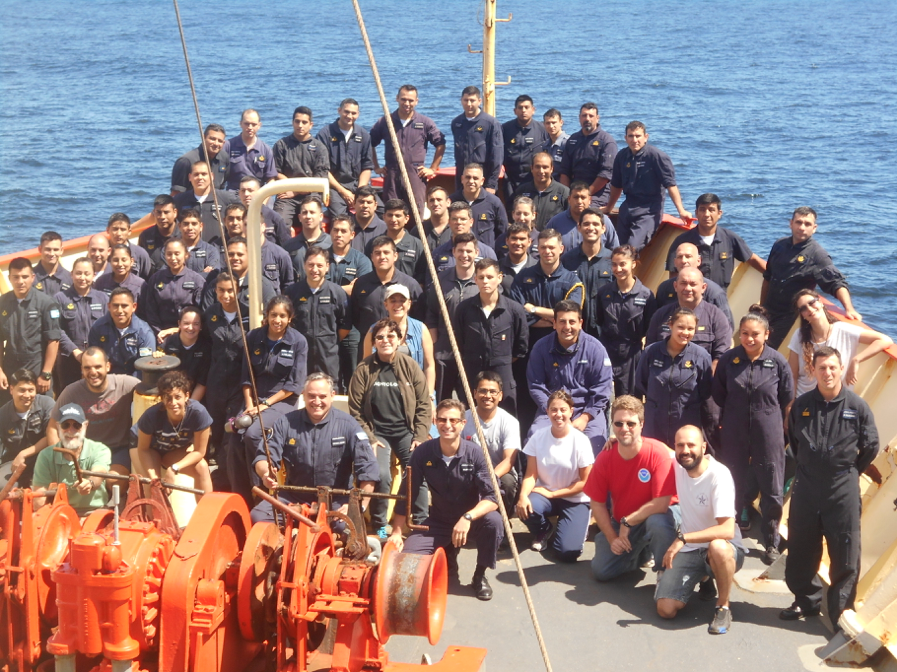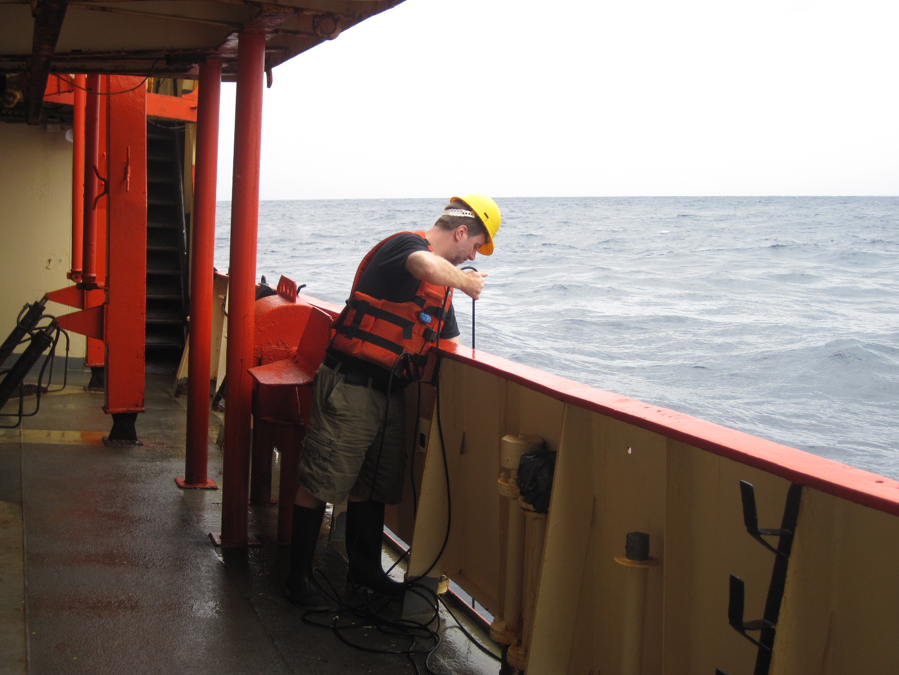AOML scientist participates in international South Atlantic research cruise
Dr. Christopher Meinen, from AOML's Physical Oceanography Division, partnered with researchers from three institutions in Argentina and two institutions in Brazil during a recent cruise aboard the Argentine research vessel ARA Puerto Deseado during October 18-28, 2018. The cruise supported NOAA's ongoing efforts to measure and understand the Meridional Overturning Circulation (MOC), a crucial component of the coupled ocean-atmosphere system that has impacts on sea level, precipitation patterns, and extreme weather (e.g., drought, heat waves, hurricane intensification). The cruise was part of the long-term Southwest Atlantic MOC project ("SAM"), which focuses on the boundary current contributions to the basinwide MOC at 34.5°S. During the cruise the Argentine and Brazilian partners led the efforts to collect full-depth hydrographic observations, while Dr. Meinen led the efforts to acoustically collect about six months of daily data from four NOAA supported instruments moored on the sea floor. These instruments, called 'Pressure-equipped Inverted Echo Sounders' or PIES for short, measure changes in the ocean-bottom pressure as well as the round-trip travel time for acoustic signals to travel up and down to the sea-floor from the bottom-moored instruments. These travel time measurements, when combined with historical hydrographic observations from the region, provide estimates of the full-depth temperature and salinity profiles every day at each PIES location. The SAM project has collected nearly ten years of daily full-water-column observations since the first deployments in March 2009. The PIES moorings monitor the western boundary flows associated with the MOC during their 36-54 month deployments, capturing variations in both the Brazil Current and the Deep Western Boundary Current, and the daily data from each PIES is downloaded every 6-12 months on cruises using Argentine and Brazilian research vessels. The SAM array also is the cornerstone of an international array that measures the basin-wide MOC transports across 34.5°S - which is known as the South Atlantic MOC Basin-wide Array ("SAMBA"). SAMBA is supported by funding agencies in Argentina, Brazil, France, South Africa, and the United States (NOAA). The October cruise focused on the western end of SAMBA, the SAM array, and it brought together researchers from the Argentine Naval Hydrographic Service (SHN), the Argentine National Institute for Fisheries Research and Development (INIDEP), the Universidad de Buenos Aires, the Brazilian Naval Hydrographic Service (SHN), the Universidade Federal do Rio Grande (FURG), and NOAA-AOML. Dr. Meinen also aided scientists from the Universidade do Sao Paulo, who were unable to attend the cruise at the last minute, by acoustically collecting data from two of their instruments moored in the same region. NOAA's contribution to this international effort is funded by the NOAA OAR-CPO Ocean Observing and Monitoring Division and by the NOAA Atlantic Oceanographic and Meteorological Laboratory.

Science party photo from the October 18-28, 2018, cruise onboard the
Argentine research vessel ARA Puerto Deseado.

Chris Meinen recovers the over-the-side transducer he’s just used to acoustically download six months of data from one of the NOAA pressure-equipped inverted echo sounder (PIES) moored instruments on the ocean bottom.